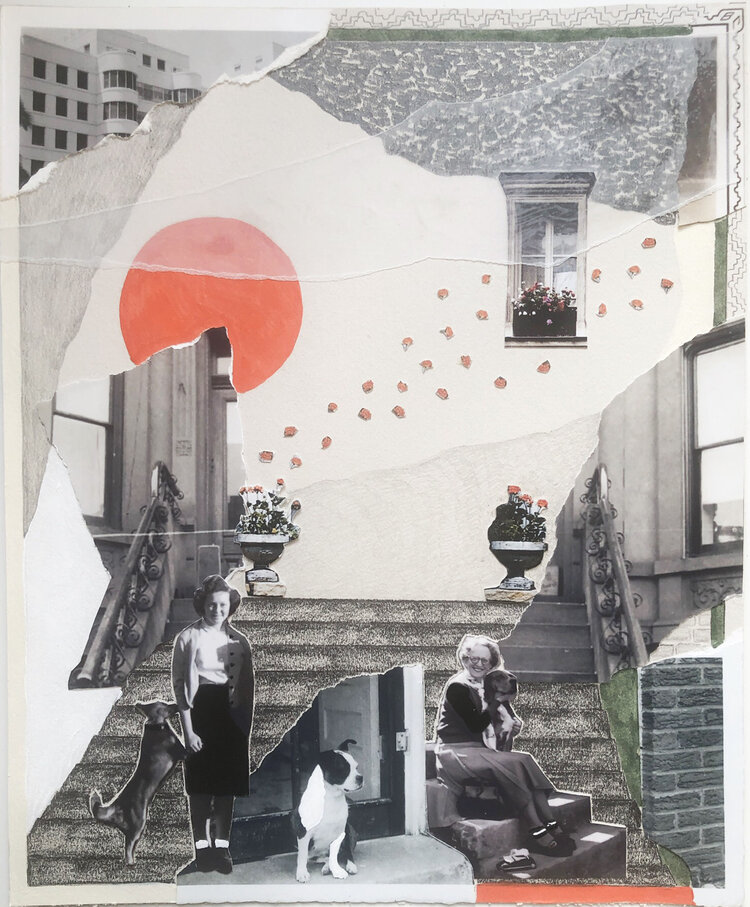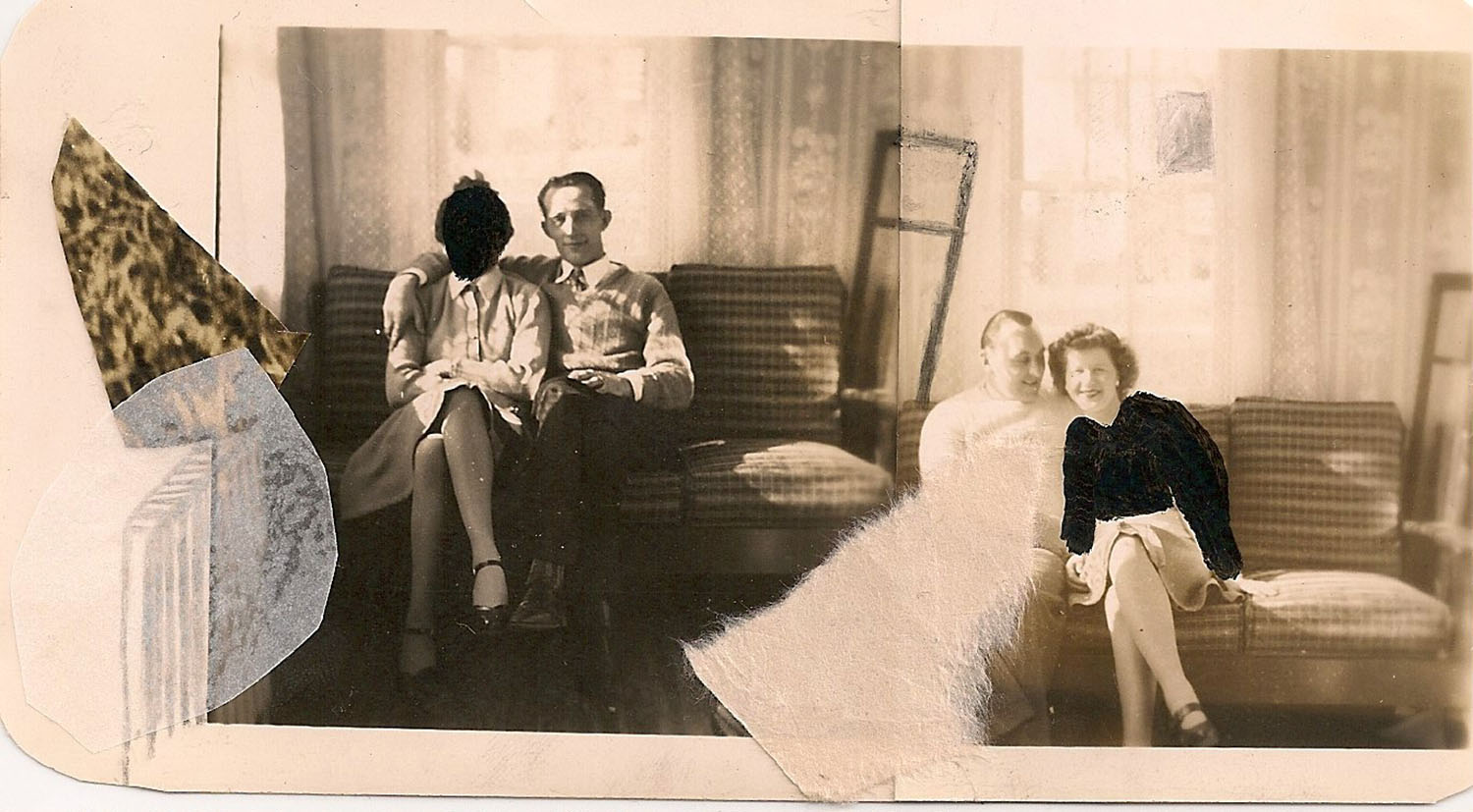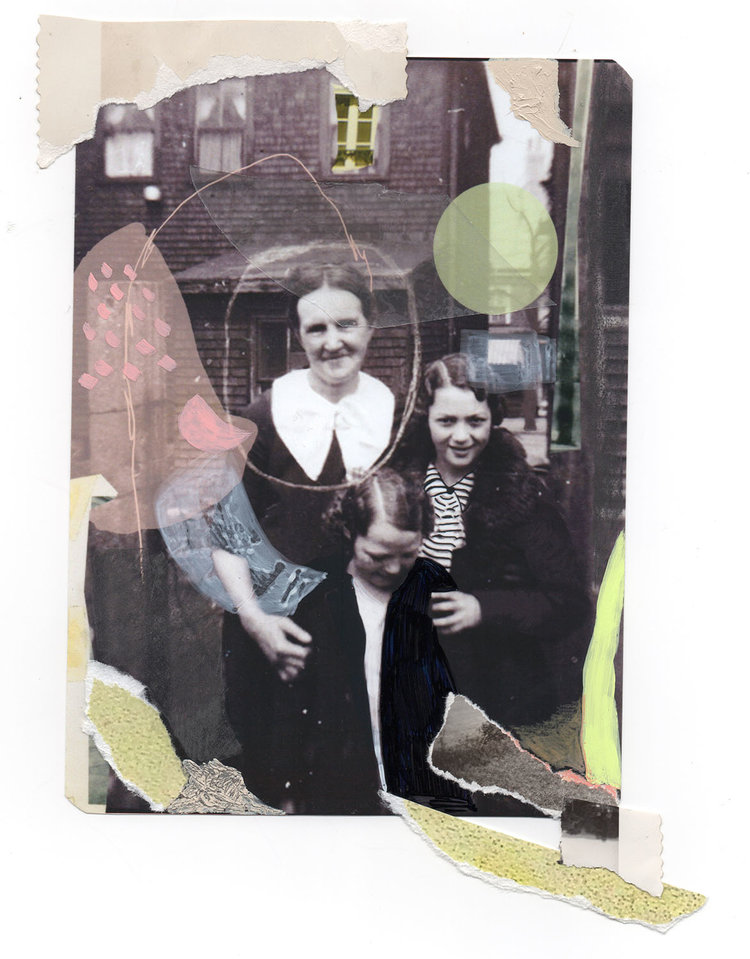interview
SARAH-TWIGGY BOYER
collage artist
︎Florida/USAjanuary 01, 2020


Would you please introduce yourself a little? What’s your background? How did you become interested in art? I know you live in Florida, but you were born and raised in Paris. Do you miss it?
My name is Sarah-Twiggy Boyer—one hyphenated name because the law in France at the time I was born did not recognize Twiggy as a real name. After three months of court hearings, the French government agreed to the name Twiggy only if another name was put before it and hyphenated. Today, you could name your child “Highway” in France and it’s totally okay—but I’ve always been called just Twiggy by friends and family. I am 29 years old and was born in Paris, France. When I was 13 years old, my mom moved my brother and I to South Florida where I attended high school, and then went on to attend the Maryland Institute College of Art in Baltimore, MD. I graduated in 2012 with a BFA as a painting major and with a curatorial studies concentration. After graduation, I stayed for another year in Baltimore as a teaching artist in an art museum and at an afterschool program. I missed my family and came back to South Florida where I taught elementary art in a public school for six years. This past August, I resigned from my teaching job to focus on my art practice and to stay at home with my daughter.
I do miss France a lot but I am confident that one day I will find myself living there again.
How would you describe your collages?
I usually describe my work as mixed media collages because they aren’t strictly collage; I incorporate drawing and painting in most of my pieces.


What are some of you current materials? And where do you find them?
My current materials are primarily found photographs and paper scraps or vellum. I find my photos online on sites like Etsy and Ebay, at thrift stores, some are given to me and some are from my own family! I sometimes also check Flickr for photos that allow modification that people graciously upload for artistic use. I also use graphite and different markers as well as acrylic paints. My favourite and preferred type of backing paper is Stonehenge.
You work both analogue and digitally. Do you have any preferences?
I 100% prefer analogue! Although I have created some pieces strictly digitally using an illustration tablet and Photoshop, there is nothing like cutting into actual paper or photos and feeling the texture of the paper with my drawing materials.
What are some of your favourite analogue and digital collage techniques?
I’m not sure if there are fancy collage technique words out there but I use scissors and ripping. Unless I absolutely have to, I won’t use an X-acto knife because I love when the cutting looks a little bit rough, jagged and not seamless and perfect; aesthetically I really enjoy that.


Do you make any other kind of art?
I do not make any other type of art aside from the occasional logo by commission or doodle here or there (I do love drawing) and the art projects we create with my daughter.
You say your work explores concepts of memories, connections, and motherhood. I would describe your work as rather nostalgic. Do you consider yourself a generally nostalgic person, or is that just one part of your personality? Or something you are dealing with at the moment?
This is an interesting question to think about! I suppose I am rather nostalgic. I like the idea of nostalgia—that feeling of happiness but also slightly sad when thinking about past memories. When I choose the photograph I’ll work with on a piece, I need to feel like it’s evoking a feeling or moment in time that I or people close to me have experienced and I want my audience to feel that way as well. I think that memories are something that can connect or link us somehow through filters of culture, traditions and time. My biggest fascination is how many photos mirror each other through time or even from completely different places in the world and this is how I think we’re all connected. I think in some way we’ve all shared the same sort of memory as someone else but through a different lens. I rarely use just one photograph in my work; I usually use fragments of many and bring them together as mirrored versions of themselves, this time shared with other strangers.
You recently had a daughter. Has motherhood changed you and your art?
Motherhood has changed, healed and cracked me open in so many ways; my compassion and empathy grew so much and my fascination with collecting little moments in time has become even more intense than it was before her (She will turn three at the end of December). My work evolved organically to a new fascination with incorporating images and themes around motherhood and our connection as mothers.
What is the hardest challenge for you being an artist?
My personal biggest challenge is feeling worthy as an artist; I’m working on trusting that my work is worthy and that there is art for everyone. A friend and women identifying artist coach (Michelle Gomez) says that “There is no good art, there is no bad art. Art just is”, and this resonated with me.
Collage in particular lacks recognition and is often seen as nothing other than a bit of a hobby. Especially when done by women. In your opinion, is being an artist harder for women? Harder for mothers?
There is still so much inequality between men and women artists. I think in the USA, on average, only about 30% of artists represented by commercial galleries are women so we have a long way to go to be on that same level of recognition as male artists. The good thing is that there are so many incredible women artists doing the work and fighting for more equity in the art world. The same goes for collage, there are some extraordinary people such as yourself with Paris Collage Collective, The Edinburgh Collage Collective (Along with Miss. Printed’s many other collage projects) and the Kanyer Art Collection which is focused on collecting collage works as well as so MANY more in an effort to show that collage is just as serious as painting.
I’ve also found an incredible network of artist mothers on Instagram and it has helped me navigate being a mother and an artist tremendously.




You say you hope to work with fellow artist mothers and to explore postpartum healing in conjunction with art. I assume you or someone close to you experienced postpartum problems first hand. Is this something you are comfortable talking about?
I did not experience postpartum depression myself but have been around mothers who have.
Last fall (2018) I actually got my birth and postpartum doula certification. I’ve worked with a few clients and found that right now, attending births was feeling a little stressful in terms of finding childcare and being apart from my daughter. While this works for many birth workers, it was not feeling right for our family at the moment. What I am hoping to do is work in postpartum doula care and incorporate art as a healing and nurturing practice during the postpartum period and beyond. I don’t have this completely worked out yet but I’d like to include art workshops, artist mother meet ups, etc. and use the power of art as a healing and relaxation practice in motherhood as a way to connect to ourselves, and with our own children.
Is art therapy or becoming an art therapist something you are actively pursuing?
I have thought in the past about pursuing art therapy and it could become something I decide to pursue in the future, but right now, I am not. I think that the kind of “healing” I am looking for is less medically driven and more spiritually driven.
Sarah-Twiggy Boyer website
Sarah-Twiggy Boyer Instagram
interview: Petra Zehner